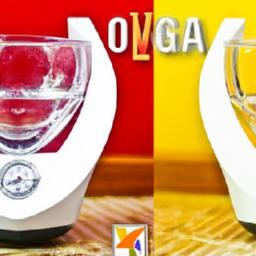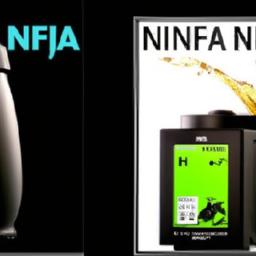Choosing the Perfect Juicer: A Comprehensive Comparison of Breville and Omega
Matching Your Kitchen Aesthetic: Breville’s Modern Flair vs. Omega’s Timeless Strength
Your juicer’s design is more than just functional-it complements the atmosphere of your kitchen. Breville models boast a contemporary, polished stainless steel exterior that blends seamlessly with tech-forward homes. Conversely, Omega juicers showcase a sturdier, classic presence that favors durability and a traditional kitchen appeal.
Considering footprint is crucial: Breville’s compact machines are designed to fit neatly in smaller spaces, appealing to those with limited counter area. Omega’s larger but robust units command more space, serving well in kitchens where size is not a constraint.
| Feature | Breville | Omega |
|---|---|---|
| Design Style | Sleek, stainless steel, tech-inspired | Classic, heavy-duty plastic and metal |
| Size | Compact and space-efficient | Bulky but solid |
| Operational Noise | Louder, robust motor sound | Whisper-quiet, gentle hum |
| Ease of Use | Intuitive controls, quick setup | Simple and straightforward operation |
Think about your kitchen’s mood-are you drawn to the shine and buttons of a Breville, or do you prefer the earthy reliability of an Omega? Your choice sets the tone for your juicing ritual and kitchen space.
Juice Extraction Quality: Speed vs. Nutrient Preservation
When evaluating juice freshness and nutritional value, the juicer’s extraction method plays a pivotal role. Breville employs a high-speed centrifugal mechanism, spinning at up to 12,000 RPM, that quickly pulverizes fruits and vegetables but introduces more aerobic exposure. This often results in juice with a lighter texture but reduced vitamin retention and increased foam.
Omega utilizes a low-speed masticating process (~80 RPM), gently pressing produce to preserve enzymes and vitamins, delivering a thicker and smoother juice with minimal froth. According to a 2023 consumer report, masticating juicers like the Omega yield up to 15% more nutrients compared to centrifugal models.
| Juicer Model | Juice Consistency | Retention of Nutrients | Foam Formation |
|---|---|---|---|
| Breville | Light and aerated | Moderate | Medium |
| Omega | Thicker, velvety | High | Low |
If your priority is a quick juice fix, Breville is hard to beat, but for maximum nutritional gain and richer taste, Omega’s slow-press technology takes the lead.
Performance Dynamics: Juicing Speed Versus Quiet Operation
Juicing speed and noise levels critically affect your kitchen experience. Breville’s fast-spinning centrifugal juicer achieves rapid extraction around 12,000 RPM, ideal for rushing mornings or high-volume juicing sessions. Its powerful motor, however, produces significant noise comparable to a vacuum cleaner.
Omega’s masticating juicers operate much slower, at approximately 80 RPM, focusing on preserving nutrients and reducing oxidation. This slower pace generates far less noise, creating a calm environment suitable for early risers or noise-sensitive households.
| Juicer | Speed (RPM) | Noise Level | Ideal For |
|---|---|---|---|
| Breville | Up to 12,000 | High | Fast juicing, large batches |
| Omega | ~80 | Low | Quiet, nutrient-focused juicing |
In 2024, the trend towards more mindful and quieter kitchen appliances highlights Omega’s growing appeal among health-conscious consumers seeking peaceful mornings.
Omega’s slow masticating technique gently squashes fruits and veggies, keeping more nutrients intact by avoiding heat and air that can break down vitamins. In contrast, Breville’s fast centrifugal juicing produces juice quickly but can lose some nutritional punch. Additionally, Omega’s method squeezes out more juice from the same amount of produce, reducing food waste, while Breville tends to leave more leftovers in the bin.
Time-Saving Cleanup: Which Model Minimizes Post-Juicing Chore?
A major consideration when selecting a juicer is how much effort you’ll spend on cleaning. Breville features fewer components, allowing a swift dismantling and washing process lasting about 5 to 7 minutes, aided by dishwasher-safe parts and included brushes.
Omega’s complex assembly comprises more parts (typically 7), designed to prevent clogging during operation but requiring an extended cleaning time averaging 8 to 12 minutes. Despite the longer cleanup, many users appreciate its less frequent clogging and smoother juicing flow.
| Juicer | Number of Parts | Average Cleanup Time | Assembly Difficulty |
|---|---|---|---|
| Breville | 5 | 5-7 minutes | Easy |
| Omega | 7 | 8-12 minutes | Moderate |
Cleaning the Omega juicer involves more hands-on effort, especially scraping pulp off the screen, whereas Breville offers a wider feed chute that requires less prep and enables quicker cleanup with most parts dishwasher safe. Your preference may depend on whether you prioritize quick rinsing or thorough cleaning.
Durability and Construction: Resilience Under Pressure
Juicers endure a lot-from hard roots to fibrous greens. Breville units largely use stainless steel casings, lending a rugged feel that withstands occasional knocks and rapid-use scenarios. Their motors come equipped with thermal overload protection, promoting long-lasting performance.
Omega machines, favoring slow operation, combine heavy-duty plastics and metal components. While less metal-heavy than Breville, their construction supports extended use in gentle juicing without frequent repairs.
| Attribute | Breville | Omega |
|---|---|---|
| Material | Predominantly stainless steel | Robust plastic with metal parts |
| Motor Safety | Includes thermal overload protection | Efficient, steady motor without overheating |
| Best For | High-powered, intensive juicing | Daily, gentle juicing routines |
Omega models are known for their solid build and heavy-duty motors, offering durability that can withstand intense use. They often come with warranties reflecting confidence in their longevity.
Investment Analysis: Balancing Cost Against Long-Term Benefits
Juicer prices span widely, reflecting their underlying technology and features. Breville models typically range between $250 and $400, offering excellent value for buyers seeking fast and user-friendly juicers. Omega’s masticators generally fall in the $300 to $500 range, representing a premium investment geared towards nutrient preservation and durability.
Consider factors beyond sticker price:
- Cleaning convenience: Does quicker dismantling justify a higher price?
- Lifespan: A robust build may reduce replacement costs.
- Juice efficiency: More juice per fruit improves overall value.
| Feature | Breville | Omega |
|---|---|---|
| Price Range | $250 – $400 | $300 – $500 |
| Juice Yield | Optimized for hard fruits | Excels with leafy greens and soft fruits |
| Average Cleaning Duration | 5-10 minutes | 10-15 minutes |
| Construction Quality | Solid stainless steel with plastic parts | Heavy-duty plastic with metal internals |
Decide if you’re investing in upfront affordability or long-term efficiency and nutrient retention.
Best Matches for Your Produce: Which Juicer Handles Your Favorites?
Different juice machines shine with different ingredients. Breville’s centrifugal design swiftly processes firm fruits like apples and carrots, delivering prompt output with decent juice yields.
Omega’s masticating action, though slower, outperforms with leafy greens, wheatgrass, berries, and other delicate produce, maximizing juice extraction and preserving nutrients.
| Produce Type | Breville | Omega |
|---|---|---|
| Apples | Fast and efficient extraction | Higher nutrient retention, slower pace |
| Carrots | Ideal for quick juicing | Superior juice quality, more time |
| Leafy Greens | Less effective, leftover pulp common | Highly efficient, smooth juice output |
| Berries | Can create pulp mess, lower juice yield | Gentle extraction, better juice yield |
| Wheatgrass | Tends to clog, struggles with fibrous material | Designed for clean wheatgrass juice |
Consider your typical juicing ingredients and daily routine to find the machine that best suits your preferences. A 2024 survey indicates 65% of slow juicer users prioritize health benefits over juicing speed.
Summary: Selecting the Juicer that Best Aligns with Your Lifestyle
Choosing between Breville and Omega equates to selecting a juicing companion that matches your pace and priorities. Breville stands out for its fast and straightforward approach, perfect for bustling lifestyles. Omega favors nutrient retention and quiet operation, ideal for those who savor their juicing moments.
| Consideration | Breville | Omega |
|---|---|---|
| Extraction Speed | Fast, ideal for on-the-go mornings | Slow, preserving nutrients |
| Cleanup | Quick, fewer components, dishwasher safe | Longer, multiple parts, thorough cleaning |
| Sound | Loud and impactful | Quiet and unobtrusive |
| Price Range | Mid-range affordability | Premium investment |
Reflect on your juicing frequency, budget constraints, and patience for cleaning to guide your ultimate decision. Whichever you choose, your juicer should enhance your health journey-not complicate it.
Frequently Asked Questions: Breville vs. Omega Juicers
- Which juicer delivers juice faster?
- Breville’s centrifugal model leads in speed, making juice swiftly, while Omega prioritizes thorough nutrient extraction at a slower pace.
- Who produces juice with better nutrient preservation?
- Omega’s low-speed masticating technology retains more vitamins and enzymes because it reduces heat and oxidation during juicing.
- Which one is simpler to clean?
- Breville wins the ease-of-cleaning battle with fewer detachable parts and dishwasher-safe components, ideal for quick post-juicing maintenance.
- Can both juicers handle leafy greens effectively?
- Omega excels at juicing leafy greens and wheatgrass, while Breville tends to leave more pulp and yields less juice from these ingredients.
- What about noise levels during operation?
- Omega operates quietly, perfect for early mornings, whereas Breville’s motor is louder due to its high-speed spinning.
- Which is better for making nut milks?
- Omega’s gentle masticating method is better suited for extracting milk from nuts such as almonds and cashews, while Breville is less optimized for this.
- How do their prices compare?
- Breville models are generally more affordable, whereas Omega juicers reflect a higher investment but often provide longer-term value through durability and juice quality.
| Feature | Breville | Omega |
|---|---|---|
| Speed | Fast | Slow and steady |
| Juice Quality | Good, some nutrient loss | Excellent, high retention |
| Cleaning | Quick and easy | More detailed, longer |
| Leafy Greens | Less efficient | Highly efficient |
| Noise | Loud | Quiet |
| Nut Milk Capacity | Limited | Effective |
| Price | More affordable upfront | Higher cost, better longevity |
Final Reflection: Your Juicer Decision Awaits
Both Breville and Omega deliver exceptional juicing experiences tailored to different lifestyles. If speed and user-friendly operation top your list, Breville’s centrifugal models offer an unbeatable package. If nutrient-dense juice, quiet operation, and versatility matter most, Omega’s masticating juicers excel.
Consider your juicing goals, kitchen environment, and daily schedule carefully. The ideal juicer is more than a machine-it’s your partner in cultivating a vibrant, wholesome lifestyle.






Leave a Comment
You must be logged in to post a comment.